     Page 6. |
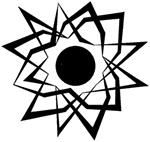 |
The sixth page organizes hexagrams of the Book of Changes i-jing in rings which correspond to quarters of a magic square and magic ratio of numbers. |
-
Rings of hexagrams of the Book of Changes i-jing differ from circles that the gradation of hexagrams and corresponding physiognomic symbols is based on other principle. Namely each ring includes 16 hexagrams to which there correspond physiognomic symbols having one emotional expression of eyes that corresponds with the arrangement within a magic square, as shown in the table:
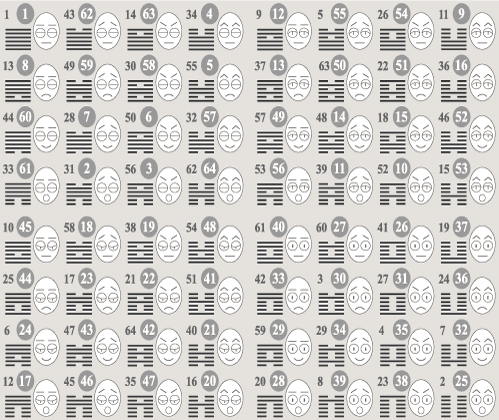 |
The shown magic square has 8 verticals and 8
horizontals that forms 64 cells. Each cell is a hexagram i-jing and a corresponding physiognomic symbol, and also each cell by means of dark figure specifies a serial number of hexagram according to sequence in the Book of Changes i-jing, and by means of white figure in a dark circle specifies numerical value which is number of a magic square or magic number. Magic numbers in cells form the equal sums of 8 verticals and 8 horizontals, that in essence defines magic properties of the shown spatial arrangement of numbers and hexagrams i-jing. The detailed information on magic properties look in the mantic game where the shown square is a basis of the game board and playing cards. |
-
Rings or otherwise to tell circular spatial arrangements of hexagrams i-jing are organized according to quarters of a magic square, namely each ring includes 16 hexagrams and 16 physiognomic symbols which have identical emotional expressions of eyes in each quarter, as shown in schemes:
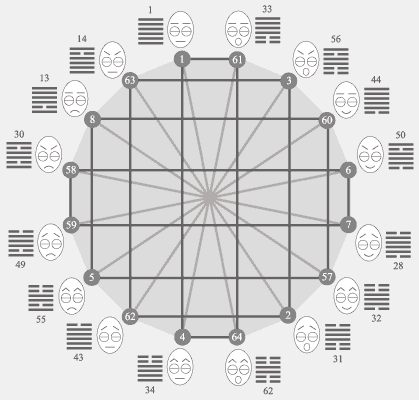 |
The first ring. Dark figures show serial numbers of hexagrams according to sequence in the Book of Changes i-jing, and white figures in dark circles show numerical values which correspond to magic numbers of a square. |
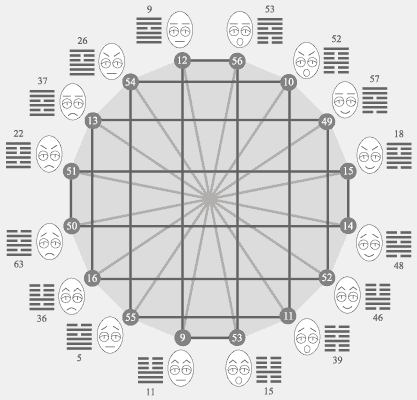 |
The second ring. The second quarter of a magic square. Dark and grey lines inside of each ring
show magic ratio of hexagrams and physiognomic symbols that corresponds to ratio
of verticals and horizontals of a magic square. |
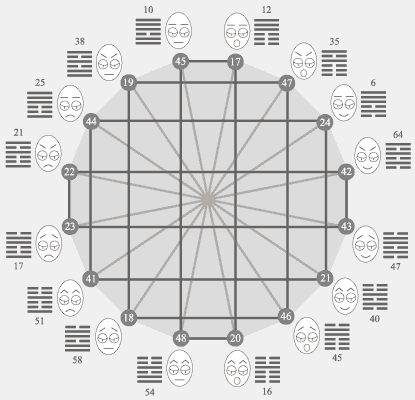 |
The third ring. The third quarter of a magic square. Also dark lines show quadrangles
in which emotional expressions of physiognomic symbols have concrete
ratio concerning verticals and horizontals. |
 |
The fourth ring. Grey lines in the shown schemes correspond to ratio of hexagrams and physiognomic symbols concerning diagonals within each quarter of a magic square. |
It is possible to organize hexagrams i-jing and physiognomic symbols in rings according to identical emotional expressions of mouths or eyebrows, namely criterion of association in rings can be not only identical emotions of eyes. But however eyes express key emotions and consequently the shown rings or otherwise to tell rings of emotions are constructed according to identical emotional expressions of eyes, but mouths and eyebrows concretize positions of hexagrams i-jing and physiognomic symbols concerning verticals and horizontals.
The following page shows the general scheme which unites four rings in one.
-